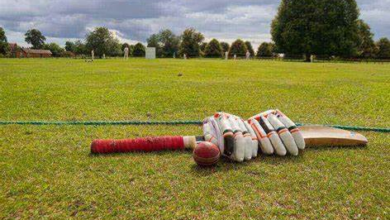Greener Venues for T20 World Cup: Promoting Eco-friendly Stadium Practices

The T20 World Cup is a cricketing extravaganza that captures the imagination of millions across the globe. However, the mega-event’s glamour often overshadows its significant environmental footprint. Large stadiums, extensive travel, and energy consumption raise concerns about the T20 World Cup’s ecological impact.
It accurately captures the essence of the article and highlights the key points:
- The T20 World Cup’s environmental concerns and their sources.
- A comprehensive plan for promoting eco-friendly practices in stadiums.
- The benefits the T20 World Cup can reap by adopting sustainability measures.
This concise summary is perfect for sharing the main ideas with T20 exchange betting someone who might not have time to read the entire article.
Is there anything else you’d like to explore regarding the T20 world cup points table and its environmental impact? Perhaps specific challenges or potential next steps for implementation?
Environmental Concerns of the T20 World Cup
The T20 World Cup’s environmental footprint stems from various factors:
- Stadium Operations: Floodlights, air conditioning systems, and maintenance activities in sprawling stadiums consume vast amounts of energy. Water usage for irrigation and sanitation can also be substantial.
- Waste Generation: Food packaging, plastic bottles, and other waste materials discarded by spectators create a significant waste management challenge.
- Travel and Transportation: The movement of players, team staff, and spectators across cities for matches leads to high carbon emissions.
The Path Towards Greener T20 World Cup Venues
Here’s a comprehensive plan for the T20 World Cup to transition towards eco-friendly stadiums:
1. Energy Efficiency:
- Renewable Energy Integration: Install solar panels on rooftops and adopt wind power purchase agreements to meet a significant portion of the stadium’s energy needs. This can significantly reduce dependence on fossil fuels.
- Energy-efficient Infrastructure: Invest in LED lighting systems for better illumination with lower energy consumption. Upgrade air conditioning systems to utilize energy-efficient technologies. Explore smart building management systems to optimize energy use based on real-time occupancy and weather conditions.
2. Water Conservation:
- Rainwater Harvesting: Implement rainwater harvesting systems to collect and store rainwater for irrigation and other non-potable uses. This can significantly increase the T20 World Cup 2024 points table and reduce reliance on municipal water supplies.
- Water-efficient Fixtures: Install low-flow faucets, showerheads, and dual flush toilets in restrooms to minimize water usage.
- Landscape Management: Develop drought-resistant landscaping around the stadium to reduce water requirements for maintenance.
3. Waste Management:
- Waste Reduction: Promote the use of reusable water bottles and encourage spectators to bring their snacks to minimize packaging waste.
- Waste Segregation and Recycling: Implement a robust waste segregation system at the stadium, separating recyclable materials like plastic, paper, and metal for proper recycling. Partner with waste management companies that adopt sustainable practices.
- Composting: Explore organic waste composting to convert food scraps and yard waste into nutrient-rich compost for landscaping needs.
4. Sustainable Procurement:
- Locally Sourced Materials: Prioritize sourcing food, beverages, and other supplies from local vendors to reduce transportation emissions and support the local economy.
- Eco-friendly Materials: Use certified sustainable materials for construction, renovation, and maintenance activities within the stadium.
- Durable and Energy-efficient Equipment: Procure appliances and equipment with high energy efficiency ratings and ensure proper maintenance to extend their lifespan.
5. Green Transportation:
- Public Transportation: Partner with local transport authorities to encourage spectators to utilize public transportation systems to reach the stadium. Offer shuttle services from nearby public transport hubs to the stadium.
- Electric Vehicle Charging Stations: Install electric vehicle charging stations within the stadium parking area to incentivize the use of electric vehicles by spectators and team staff.
- Carpooling: Promote carpooling initiatives among spectators and team staff to reduce the number of vehicles on the road.
6. Education and Awareness
- Fan Engagement: Launch awareness campaigns to educate fans about the environmental impact of the T20 World Cup and how they can contribute to a greener experience. Organize green initiatives like waste collection drives or tree plantation programs.
- Partnerships with Environmental NGOs: Collaborate with environmental NGOs to develop and implement sustainable practices within the stadiums. Leverage their expertise to raise awareness and encourage fan participation.
- Awards and Recognition: Institute awards to recognize stadiums and teams that demonstrate exceptional commitment to sustainable practices. This will incentivize healthy competition and continuous improvement in Indibet.
The Benefits of Going Green
Transitioning to eco-friendly stadiums offers the T20 World Cup a multitude of benefits:
- Reduced Environmental Impact: This is the most obvious benefit. By using less energy and water, and generating less waste, the T20 World Cup can help to conserve resources and protect the environment.
- Improved Fan Experience: Eco-friendly stadiums can be more comfortable and enjoyable for fans. For example, stadiums that use solar power can provide shade and cooling for spectators.
- Potential for Innovation: The move towards sustainability can spur innovation in areas such as renewable energy generation, waste management, and green building practices.
Overall, going green is a win-win for the T20 World Cup, the environment, and cricket fans. Talking about fans, now for T20 betting, you can visit Indibet for the best odds.



